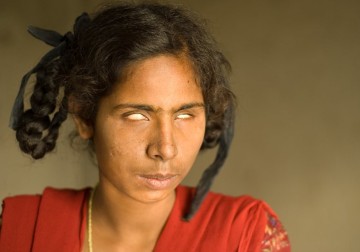A letter to the editor by Drs Sayan Basu and Anthony Vipin Das from L. V. Prasad Eye Institute discusses blindness at no light perception based on the findings of a cross-sectional, hospital-based study. The authors also discuss regenerative therapies and other ideas that are at the ‘final frontier of vision restoration’.
The Vision Loss Expert Group estimates that over 40 million people are blind in the world. This figure notes the cut-off for blindness as being at least able to count fingers from a meter away or worse. Several health agencies and public-spirited hospital networks like LVPEI are working to address the common preventable or curable forms of such blindness. Indeed, in most cases, especially in low- and middle-income countries like India, nearly 90% of such blindness can be addressed with existing procedures and technologies. Their interventions have seen laudable success over the years, reducing the overall prevalence of blindness across time and geography.
Trends in the global population, however, note the rise of a new kind of blindness, which is not easily treatable or reversible. Already, prevalence data is showing an increase in conditions like diabetic retinopathy, which is irreversible once it sets in. An ageing population means an increase in the prevalence of conditions like macular degeneration and glaucoma are adding to this disease burden. A variety of conditions, including ocular infections, trauma, optic neuropathies, retinitis pigmentosa, or end-stage glaucoma can result in complete blindness or what is called blindness with no light perception (NLP). As the name suggests, it is the most severe form of blindness and is irreversible. We know little about the prevalence of NLP and even less on how best to tackle this form of complete sight loss.
In a letter to the editor in the Seminars in Ophthalmology, Drs Sayan Basu and Anthony Vipin Das discuss the findings of a cross-sectional, observational, hospital-based study of no light perception among patients presenting at the LVPEI network across Andhra Pradesh, Karnataka, Odisha, and Telangana over 12 years (2010-2022). Out of 3,278,132 electronic patient records analyzed, 60,668 (1.85%) had NLP in at least one eye. Indeed, over 94% of patients with NLP had unilateral blindness. More men (64% in the case of unilateral blindness) had NLP than women. People with lower incomes and those who live in rural areas were more likely to have NLP when compared to those living in urban and metropolitan areas. Glaucoma and trauma are the primary causes of NLP in this study.
This paper fills an important gap in our understanding of sight loss. It is a call to kick-start the next paradigm in blindness prevention: radical sight restoration. It notes that cutting-edge therapies like nerve regeneration procedures or whole eyeball transplantation are the sort of next-generation interventions that can ‘push forward the frontiers of medicine.’
‘There is limited literature on the burden of people with No Light Perception in either eye in the Indian context. Our goal was to identify the causes to help plan strategies for prevention and to develop vision restoration therapies in the future,’ notes Dr Anthony Vipin Das, consultant ophthalmologist, LVPEI.
Citation
Anthony Vipin Das & Sayan Basu (2023) Incurable Blindness: The Final Frontier in Vision Restoration, Seminars in Ophthalmology, 38:4, 394-397, DOI: 10.1080/08820538.2023.2194980
Photo credit: Tabusum reading, photo by J P Davidson/Flickr CC BY 2.0



